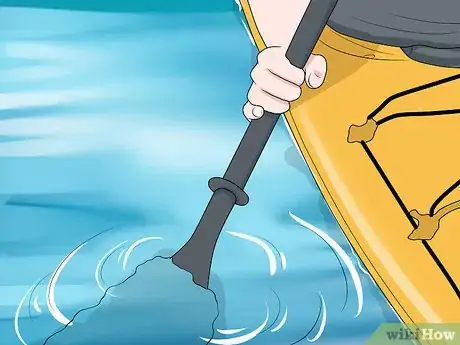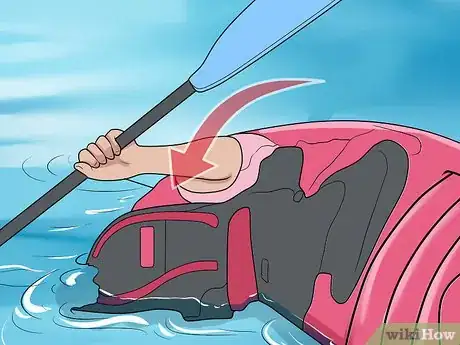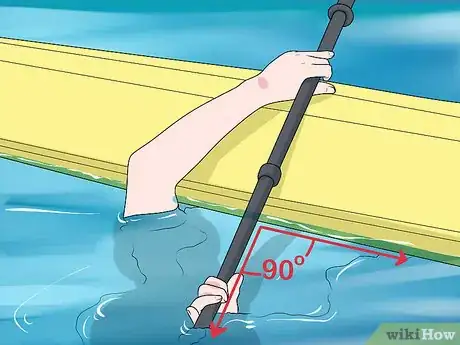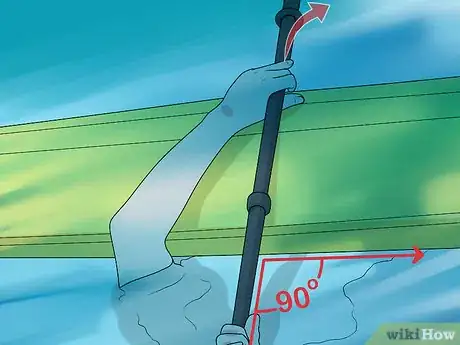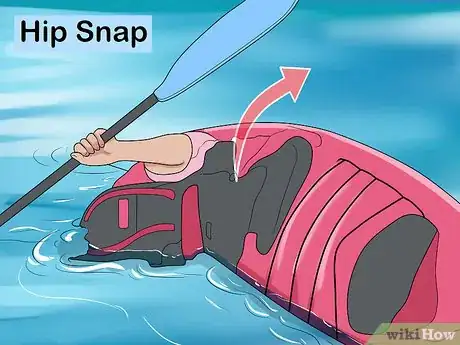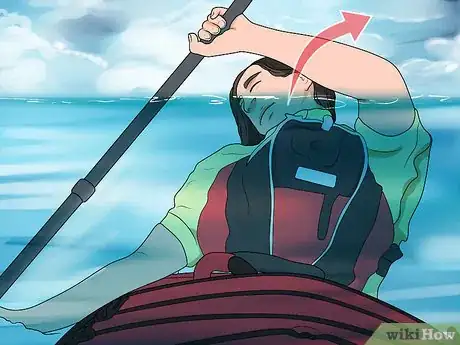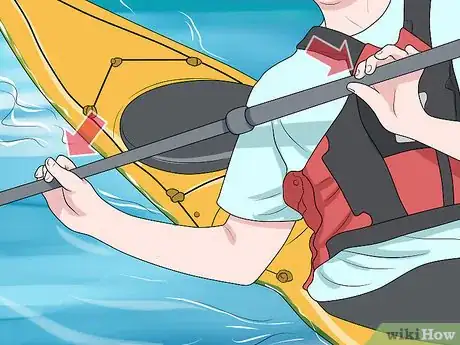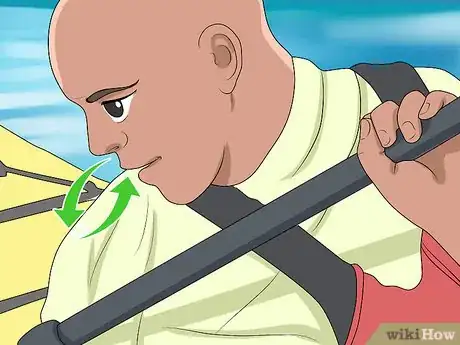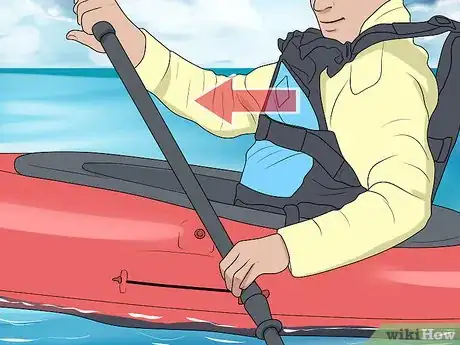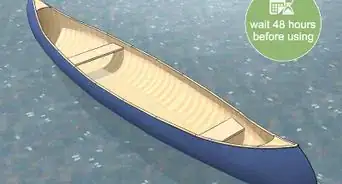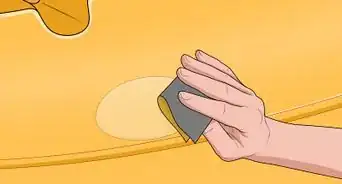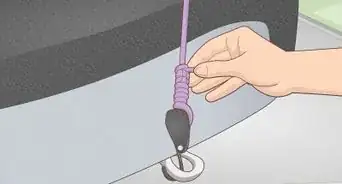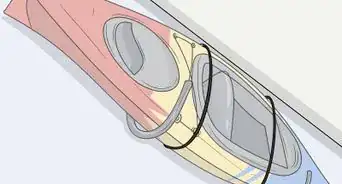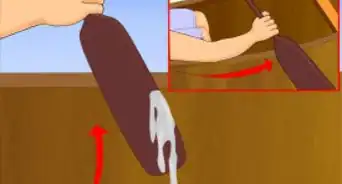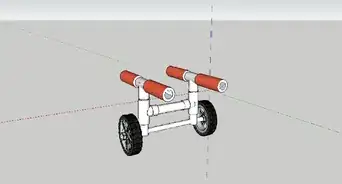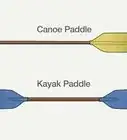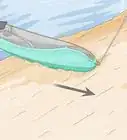This article was co-authored by wikiHow Staff. Our trained team of editors and researchers validate articles for accuracy and comprehensiveness. wikiHow's Content Management Team carefully monitors the work from our editorial staff to ensure that each article is backed by trusted research and meets our high quality standards.
There are 10 references cited in this article, which can be found at the bottom of the page.
This article has been viewed 63,918 times.
Learn more...
Kayaking is a fun way to get exercise, but occasionally your kayak may flip over. Whether your kayak flips due to rough water or simply losing your balance, you can keep yourself safe by learning how to roll a kayak. A C-to-C roll is a basic roll that's great for all kayakers.[1] By setting up to practice a C-to-C roll, pulling yourself upright, and recovering from the roll, you can become a confident kayaker in no time.
Steps
Setting up to Practice a C-to-C Roll
-
1Practice learning to roll in calm, shallow water. Have a friend spot you while you are learning how to roll. It's always a good idea to establish a distress signal, too, so you can communicate if you need help.[2]
- Setting up to roll is important not only during practice but also during normal kayaking. It will help you roll over quickly and efficiently.
-
2Align your paddle alongside your kayak. Hold your paddle in both hands on the side of the kayak opposite your dominant hand. Hold the paddle right above the water's surface with the front blade flat to the surface of the water.[3]
- If your paddle is feathered, with a concave curve on one side of the blade, hold that side up. This is also called the “power” face of your paddle.
- For example, if you are right handed, hold the paddle on your left-hand side to set up for the roll.
Advertisement -
3Tuck your head and body forward. Press your chin against your chest, and lean your chest forward towards the side of the kayak where you're holding your paddle. You're going to roll in this direction.[4]
-
4Turn your body into the water towards your paddle. Hold your paddle steady in the same position alongside your kayak as you do this. You will naturally rotate head down into the water.[5]
Pulling Yourself Upright from Upside Down
-
1Swing your front paddle blade out to 90 degrees to the kayak. Keep your paddle blade as close to the surface of the water as you can while you are head-down underwater. Your arms will act as a pivot during the turn, leveraging against the kayak.[6]
- This position will help you get the most leverage to press down against the water and right yourself.
-
2Keep your hands in the “power position” to avoid shoulder injuries. Imagine an invisible line between each of your shoulders and another dividing your body in half vertically. Through the roll, avoid having either hand cross the midline or move behind your shoulder line. To do this, rotate your torso whenever your rotate your arms to keep your body aligned.[7]
- Watch your blade move through the water when you swing it out to 90 degrees. This will naturally cause your torso to rotate in alignment with your hands.
-
3Use your opposite forearm as a pivot against the bottom of your kayak. With your front paddle blade out at 90 degrees, pull downward against the surface of the water. Use your arm against the kayak bottom as leverage to increase the strength of your pull.[8]
-
4Perform a hip snap to lift yourself out of the water. As you press down against the surface of the water, use your hips and dominant knee to rock the kayak upright with the force of your pull. As you rotate, leave your head and shoulders in the water as long as possible.
- Lifting your head and shoulders out of the water too early (they are heavy!) can zap the momentum from your roll.
- Practice your hip snap to build speed. The more you practice, the more quickly you'll be able to roll and right yourself.
-
5Press your head against your far shoulder as you roll. Eliminate the temptation to lift your head out of the water early by keeping your ear against your shoulder. Your head will be the last part of you to emerge from the water.[9]
Recovering from the Roll
-
1Finish your roll with your wrists cocked back slightly. As you come up from your roll, rotate your knuckles towards the back of your wrist. This will help you brace yourself against the water with your paddle as you find your balance again.[10]
-
2Take a moment to catch your breath. Shake any water out of your eyes and ears, so all your senses are available to you. Take a deep breath or two if you feel winded.
-
3Lean forward. Shift your bodyweight forward, as you'll naturally come up from your roll with your bodyweight slightly back. Paddle ahead as normal. You're ready to tackle your next challenge![11]
References
- ↑ https://www.youtube.com/watch?v=v-riOC8poAs&feature=youtu.be&t=30
- ↑ http://www.baylor.edu/campusrec/doc.php/270923.pdf
- ↑ https://www.youtube.com/watch?v=v-riOC8poAs&feature=youtu.be&t=149
- ↑ https://www.youtube.com/watch?v=v-riOC8poAs&feature=youtu.be&t=162
- ↑ https://www.youtube.com/watch?v=v-riOC8poAs&feature=youtu.be&t=162
- ↑ https://www.youtube.com/watch?v=v-riOC8poAs&feature=youtu.be&t=236
- ↑ https://www.youtube.com/watch?v=PXsP0eUwBac&feature=youtu.be&t=57
- ↑ https://www.youtube.com/watch?v=v-riOC8poAs&feature=youtu.be&t=283
- ↑ https://www.youtube.com/watch?v=v-riOC8poAs&feature=youtu.be&t=439
